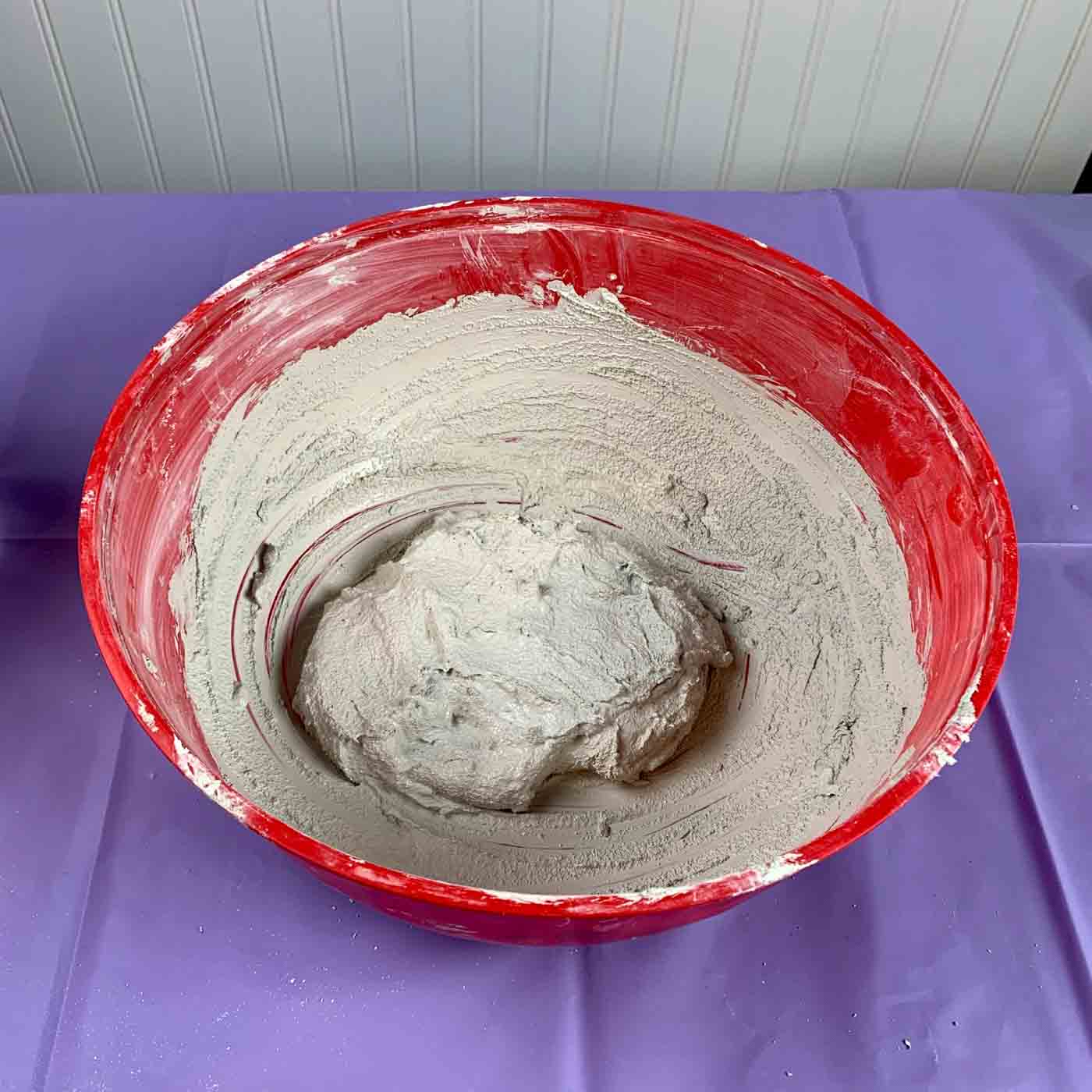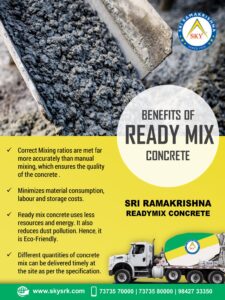To mix white cement, combine one part white cement with two parts sand and water. Stir until you reach a smooth consistency.
White cement is ideal for decorative works and repairs due to its bright, clean color. It enhances the aesthetic appeal of structures, making it popular for architectural projects. Mixing white cement properly is crucial for achieving the desired strength and appearance.
The process involves simple ingredients: white cement, sand, and water. Using clean, uncontaminated materials ensures the best results. The right consistency is key, so add water gradually while mixing. This guide will help you understand the steps to mix white cement efficiently for your next project.
Introduction To White Cement
White cement is a versatile and aesthetic choice for construction. It is known for its bright color and smooth finish. It enhances the look of buildings and structures.
The Basics Of White Cement
White cement is made from raw materials with low iron and magnesium. This gives it a bright white color. It is similar to grey cement in composition but different in color.
White cement is used for decorative works and high-end construction. It is mixed with water and other materials to create a paste. This paste hardens to form a strong surface.
Advantages Of Using White Cement
- Bright Finish: White cement gives a bright and clean finish to surfaces.
- Versatile: It can be used for floors, walls, and decorative pieces.
- Reflective: It reflects more light, making spaces look bigger and brighter.
- Durable: White cement is strong and long-lasting.
| Property | White Cement | Grey Cement |
|---|---|---|
| Color | Bright White | Grey |
| Usage | Decorative | Structural |
| Reflectivity | High | Low |
| Cost | Higher | Lower |

Credit: www.youtube.com
Safety First: Preparing To Mix
Mixing white cement can be a rewarding task. But, safety should always be your top priority. Before starting, ensure you have the right gear and understand the materials you are working with.
Personal Protective Equipment
Wearing the right gear is crucial when mixing white cement. Always put on safety goggles. This will protect your eyes from dust and debris. Use a dust mask to avoid inhaling harmful particles. Gloves are essential to protect your hands from chemicals and rough materials. A long-sleeved shirt and long pants will protect your skin from splashes.
| Equipment | Purpose |
|---|---|
| Safety Goggles | Protects eyes from dust and debris |
| Dust Mask | Prevents inhalation of harmful particles |
| Gloves | Protects hands from chemicals |
| Long-Sleeved Shirt and Pants | Shields skin from splashes |
Understanding Material Safety Data Sheets
Before you start, read the Material Safety Data Sheet (MSDS) for white cement. The MSDS provides important safety information about the product. It explains the chemical properties, potential hazards, and safe handling practices.
- Chemical Properties: Know what chemicals are in the cement.
- Potential Hazards: Understand the risks, such as skin irritation.
- Safe Handling Practices: Learn how to safely mix and store the cement.
Keep the MSDS accessible at all times. You might need to refer to it quickly. Familiarize yourself with the first-aid measures in the MSDS. This will help you respond to any accidents or exposures effectively.
Tools And Materials Needed
Mixing white cement can be a rewarding DIY project. To achieve the best results, you need the right tools and materials. This section covers everything you’ll need.
List Of Essential Tools
Before starting, gather all necessary tools. This will make your work smoother and more efficient.
- Mixing Bucket: A sturdy bucket for mixing the cement.
- Trowel: Essential for spreading and smoothing the cement.
- Measuring Cup: For accurate measurement of water and additives.
- Drill with Mixing Paddle: For thorough mixing of the cement.
- Protective Gear: Gloves and goggles to ensure safety.
Choosing The Right White Cement And Additives
Selecting the right white cement is crucial. It ensures durability and aesthetics.
| Type | Description |
|---|---|
| Ordinary White Cement | Good for general use. Offers a clean, bright finish. |
| High Strength White Cement | Ideal for structural projects. Provides extra strength and durability. |
Additives can enhance the properties of your white cement mix. Consider using the following:
- Plasticizers: Improve workability without adding more water.
- Waterproofing Agents: Make the cement mix water-resistant.
- Color Pigments: Add colors to your white cement for decorative purposes.
Having the right tools and materials will ensure your white cement project is successful. These essentials are the foundation of a good mix.

Credit: www.uglyducklinghouse.com
Starting With The Right Ratios
Mixing white cement properly starts with using the right ratios. This ensures strength and durability. Incorrect ratios can lead to a weak mix. Follow these guidelines to get the best results.
Calculating Proportions For Your Project
Knowing the exact proportions is key. Here is a simple guide:
| Component | Ratio |
|---|---|
| White Cement | 1 part |
| Sand | 2 parts |
| Water | 0.5 part |
Use these ratios to mix your white cement. Adjust if needed for your specific project.
The Importance Of Precision
Precision is crucial in mixing white cement. A small error can weaken the mix. Use measuring tools for accuracy.
- Measuring Cups: Use for small projects.
- Weighing Scale: Ideal for larger quantities.
Always mix thoroughly. This ensures even distribution of all components. Mix until you get a smooth consistency.
- Add white cement to a mixing container.
- Gradually add sand while stirring.
- Slowly add water to the mix.
Keep the mixture smooth and lump-free. This will result in a strong and durable finish.
Mixing Techniques For White Cement
Mixing white cement properly is crucial for achieving a strong and smooth finish. The right techniques ensure your cement mix is consistent and durable. This section covers the essential methods for mixing white cement effectively.
Dry Mixing: The Initial Step
Dry mixing is the first step in preparing white cement. Begin by measuring the required amounts of white cement and sand. Use a clean, dry container for this process.
- Measure the white cement accurately.
- Add the sand gradually to the container.
- Mix the two components thoroughly using a trowel or a mixing tool.
Ensure the dry mix is uniform in color and texture. Any lumps or inconsistencies can weaken the final mix.
Adding Water: Finding The Perfect Consistency
Adding water is the next crucial step. The amount of water affects the consistency and workability of the cement. Follow these steps to achieve the perfect mix:
- Slowly pour water into the dry mix.
- Stir the mixture continuously with a trowel or a mixer.
- Check the consistency frequently. The mix should be smooth and lump-free.
Avoid adding too much water at once. It can make the mix too runny. Aim for a thick, paste-like consistency.
| Step | Action | Tip |
|---|---|---|
| Dry Mixing | Combine white cement and sand | Ensure a uniform mix |
| Adding Water | Gradually add water and stir | Avoid a runny consistency |
Following these steps ensures your white cement mix is strong and smooth. Proper mixing techniques lead to a durable and attractive finish.

Credit: www.facebook.com
Troubleshooting Common Mixing Issues
Mixing white cement can sometimes present challenges. These issues can affect the final product. Here are some common problems and how to solve them.
Dealing With Lumps
Lumps can appear in the mixture. This happens if the cement is not mixed properly. To avoid lumps, follow these steps:
- Always use clean water.
- Mix the cement and water slowly.
- Stir the mixture continuously.
- Use a mechanical mixer if possible.
If lumps still form, sift the dry cement before mixing. You can also break up lumps with a trowel.
Adjusting For Humidity And Temperature
Humidity and temperature can affect the mixing process. High humidity can make the mixture too wet. Low humidity can make it too dry. Here’s how to adjust:
| Condition | Action |
|---|---|
| High Humidity | Add less water. |
| Low Humidity | Add more water. |
| High Temperature | Mix quickly. |
| Low Temperature | Warm the water before mixing. |
Always test a small batch first. This helps you find the right balance.
Application Tips For White Cement
White cement is a versatile material. It is perfect for many applications, from decorative projects to structural works. Below are some crucial tips for applying white cement effectively. Follow these guidelines for a smooth and durable finish.
Surface Preparation
Proper surface preparation is essential for the best results. A clean and even surface ensures better adhesion and a long-lasting finish. Follow these steps for optimal surface readiness:
- Clean the Surface: Remove any dirt, dust, or grease. Use a wire brush or a pressure washer.
- Repair Cracks: Fill any cracks or holes with a suitable filler. Let it dry completely.
- Moisten the Surface: Dampen the surface with clean water. Ensure it is moist but not wet.
- Check for Evenness: Use a level to ensure the surface is even. Uneven surfaces can lead to cracks.
Applying And Curing For Best Results
Applying and curing white cement correctly is vital for a durable finish. Here are the steps you should follow:
- Mix the Cement: Follow the instructions on the packaging. Use clean water and mix until smooth.
- Apply the Cement: Use a trowel or a brush. Spread the cement evenly across the surface.
- Smooth the Surface: Use a float to smooth out any bumps. Ensure a uniform finish.
- Allow to Set: Let the cement set for at least 24 hours. Protect it from direct sunlight and rain.
- Cure Properly: Keep the surface moist for at least a week. This helps the cement gain strength.
Following these tips will ensure your white cement project looks professional and lasts longer.
Cleaning Up And Sustainability Practices
Mixing white cement can be a rewarding task. Yet, it is crucial to follow cleaning up and sustainability practices. These ensure the environment stays safe and materials are reused effectively. Below, we delve into proper disposal and recycling methods.
Proper Disposal Of White Cement
Proper disposal of white cement is vital. Never pour leftover cement down drains. It can clog pipes and harm water sources. Instead, let the cement harden. Once hardened, it can be disposed of as construction waste.
For small amounts, place the cement in a container. Label it clearly and take it to a local waste facility. This ensures it is handled correctly. Always follow local regulations for disposal. This keeps the environment safe and clean.
Reusing And Recycling Materials
Reusing materials saves resources. It also reduces waste. Leftover white cement can be used for small repair jobs. It can also be mixed into new batches of cement.
Recycling is another key practice. Clean your mixing tools thoroughly after use. This prevents cement from hardening on them. Use a sturdy brush and water for cleaning. Collect the wash water in a container. Let the sediment settle. Then, reuse the water for future mixing tasks.
Consider using containers made from recycled materials. This reduces the demand for new plastic. It also supports the recycling industry. Every small step helps in making a big difference.
| Action | Benefit |
|---|---|
| Proper Disposal | Prevents environmental harm |
| Reusing Cement | Saves resources |
| Recycling Water | Reduces waste |
By following these practices, you contribute to a healthier planet. Your efforts in proper disposal and recycling will make a positive impact.
Creative Uses For White Cement
White cement is a versatile material with many creative applications. Its bright color and smooth finish make it perfect for various projects. This section explores how you can use white cement in DIY home decor and innovative construction ideas.
Diy Home Decor Projects
White cement is ideal for DIY home decor projects. You can make stunning pieces that add a modern touch to your home. Here are some ideas:
- Candle Holders: Create elegant candle holders by pouring white cement into molds.
- Planters: Design unique planters for your indoor plants. They look chic and are durable.
- Wall Art: Craft beautiful wall art by casting white cement in various shapes.
These projects are simple and fun. You can customize them to fit your style. All you need are some molds, white cement, and a bit of creativity.
Innovative Construction Ideas
White cement is not just for small projects. It has many innovative construction uses as well. Here are some examples:
| Project | Description |
|---|---|
| Flooring | White cement floors are sleek and modern. They are easy to clean and maintain. |
| Countertops | Create stylish and durable countertops. They add a contemporary look to kitchens and bathrooms. |
| Architectural Elements | Use white cement for columns, balustrades, and other decorative features. They enhance the aesthetic appeal of buildings. |
These construction ideas are both practical and stylish. White cement offers a clean, modern look that is hard to beat.
Conclusion: The Art Of White Cement Mixing
Mixing white cement can be a rewarding task. Understanding the steps ensures a perfect blend. This process is not just about mixing but creating something unique.
Final Thoughts
Mastering white cement mixing takes practice. Follow the steps carefully. Use the right tools and materials. Always measure accurately. Keep safety in mind at all times.
A well-mixed batch provides a strong and beautiful result. Your work will show the effort you put in. Enjoy the process and learn from each mix.
Encouragement For First-timers
Don’t worry if your first mix isn’t perfect. Every expert started as a beginner. Take your time and learn from any mistakes.
Each mix will improve your skills. Keep practicing and stay patient. Your confidence will grow with each project.
Frequently Asked Questions
What Is The Mix Ratio For White Cement?
The mix ratio for white cement is typically 1 part white cement to 2-3 parts sand. Adjust water for desired consistency.
How Do You Make White Cement Mix?
Mix white cement with water in a 2:1 ratio. Stir until smooth. Add sand for strength if needed.
Does White Cement Need Sand?
Yes, white cement needs sand for most applications. Mixing sand with white cement increases strength and durability.
What Can I Add To Cement To Make It White?
Add white Portland cement, titanium dioxide, or lime to make cement white. These materials ensure a bright, clean finish.
Conclusion
Mastering the art of mixing white cement is essential for quality construction. Follow the steps to achieve a smooth, durable mix. Proper ratios and mixing techniques ensure strength and longevity. Practice and attention to detail will yield the best results.
Happy building and enjoy your perfectly mixed white cement projects!






